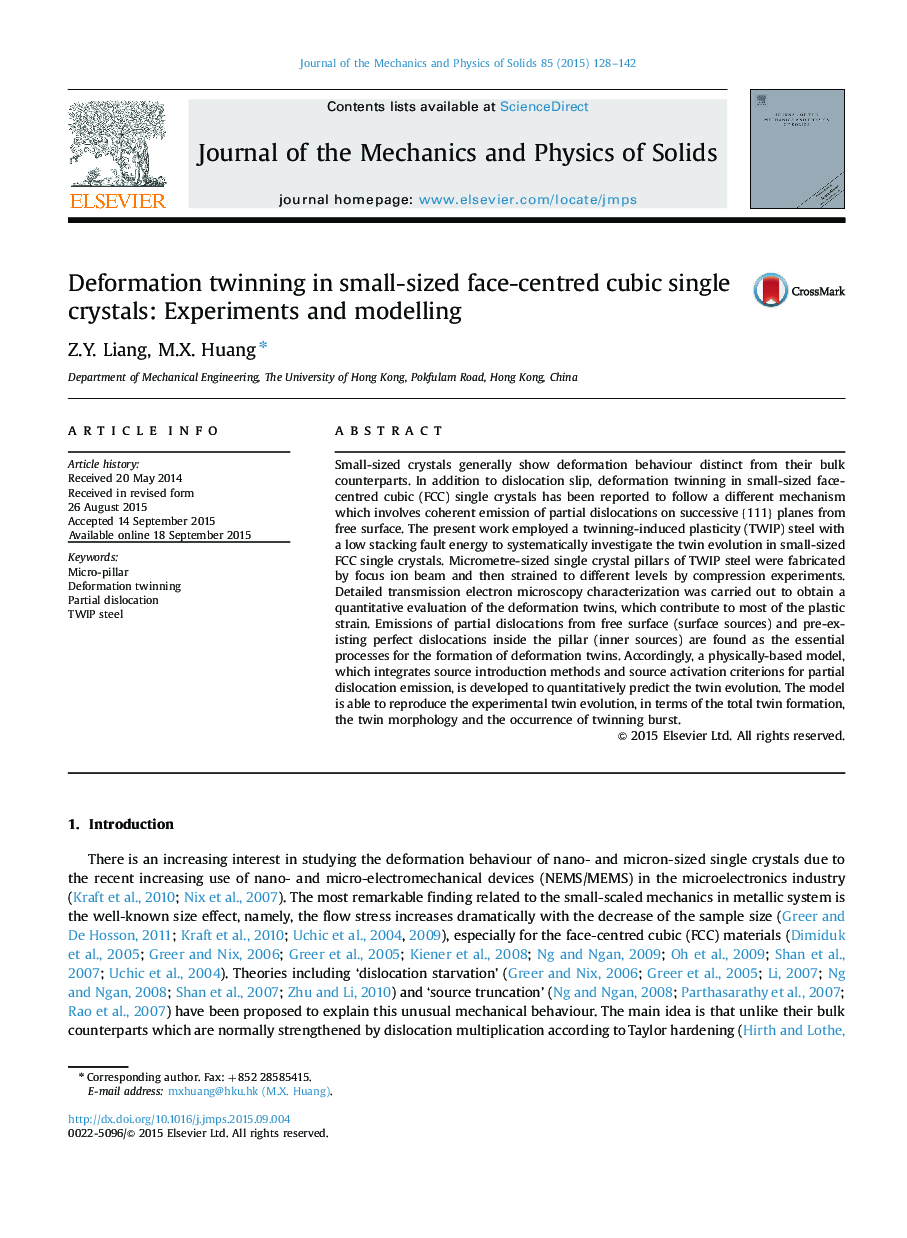| Article ID | Journal | Published Year | Pages | File Type |
|---|---|---|---|---|
| 797260 | Journal of the Mechanics and Physics of Solids | 2015 | 15 Pages |
Small-sized crystals generally show deformation behaviour distinct from their bulk counterparts. In addition to dislocation slip, deformation twinning in small-sized face-centred cubic (FCC) single crystals has been reported to follow a different mechanism which involves coherent emission of partial dislocations on successive {111}{111} planes from free surface. The present work employed a twinning-induced plasticity (TWIP) steel with a low stacking fault energy to systematically investigate the twin evolution in small-sized FCC single crystals. Micrometre-sized single crystal pillars of TWIP steel were fabricated by focus ion beam and then strained to different levels by compression experiments. Detailed transmission electron microscopy characterization was carried out to obtain a quantitative evaluation of the deformation twins, which contribute to most of the plastic strain. Emissions of partial dislocations from free surface (surface sources) and pre-existing perfect dislocations inside the pillar (inner sources) are found as the essential processes for the formation of deformation twins. Accordingly, a physically-based model, which integrates source introduction methods and source activation criterions for partial dislocation emission, is developed to quantitatively predict the twin evolution. The model is able to reproduce the experimental twin evolution, in terms of the total twin formation, the twin morphology and the occurrence of twinning burst.
